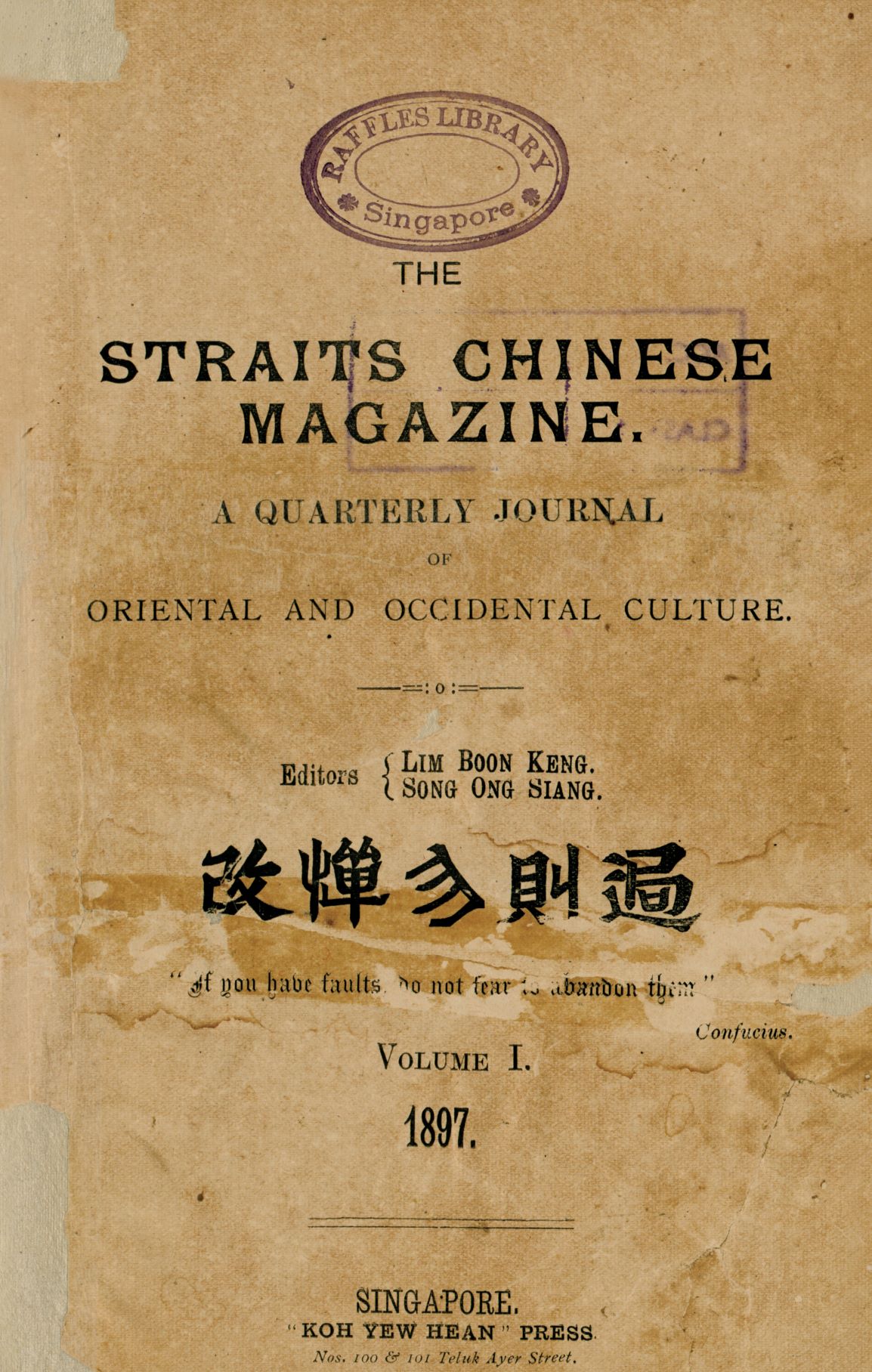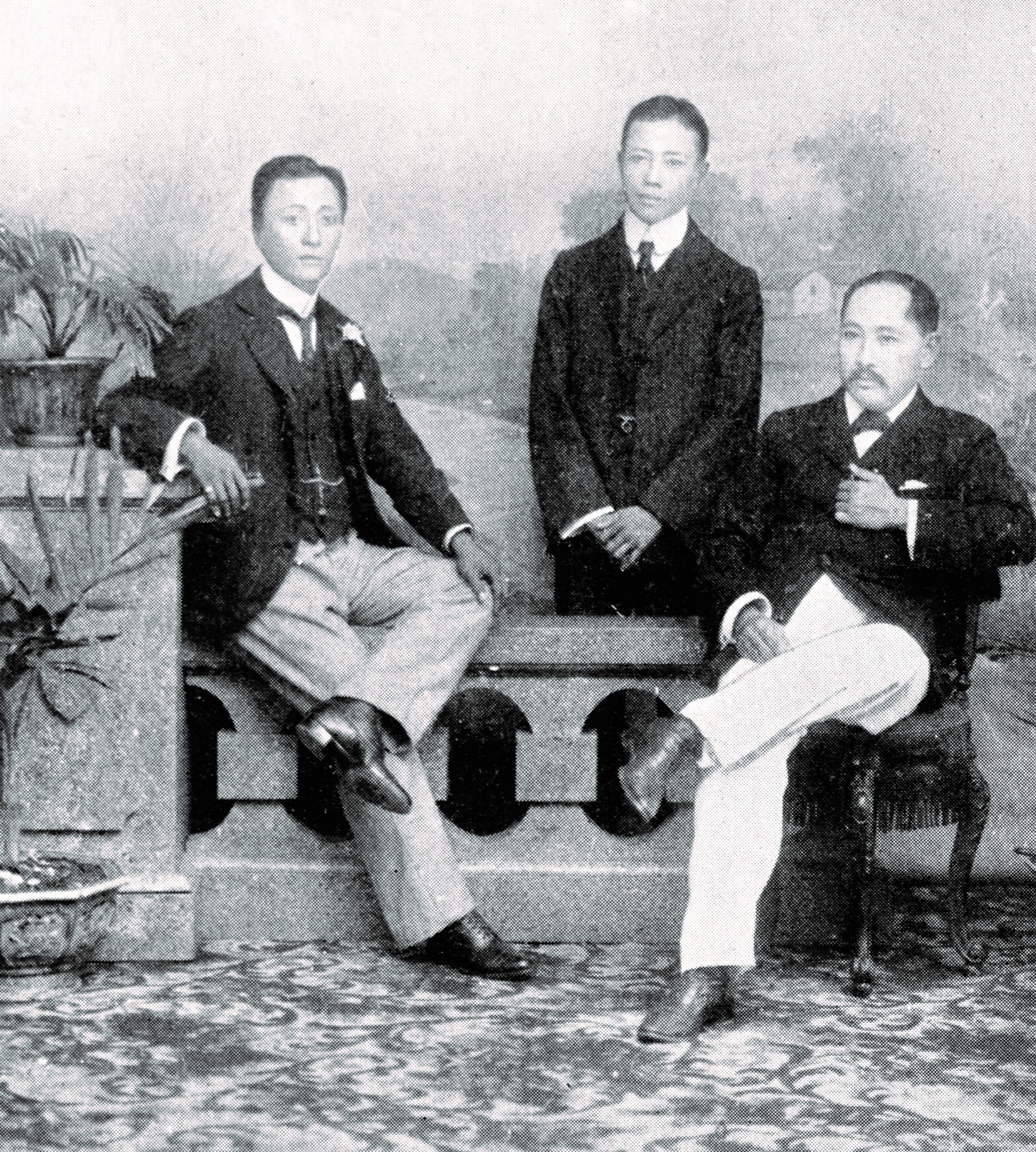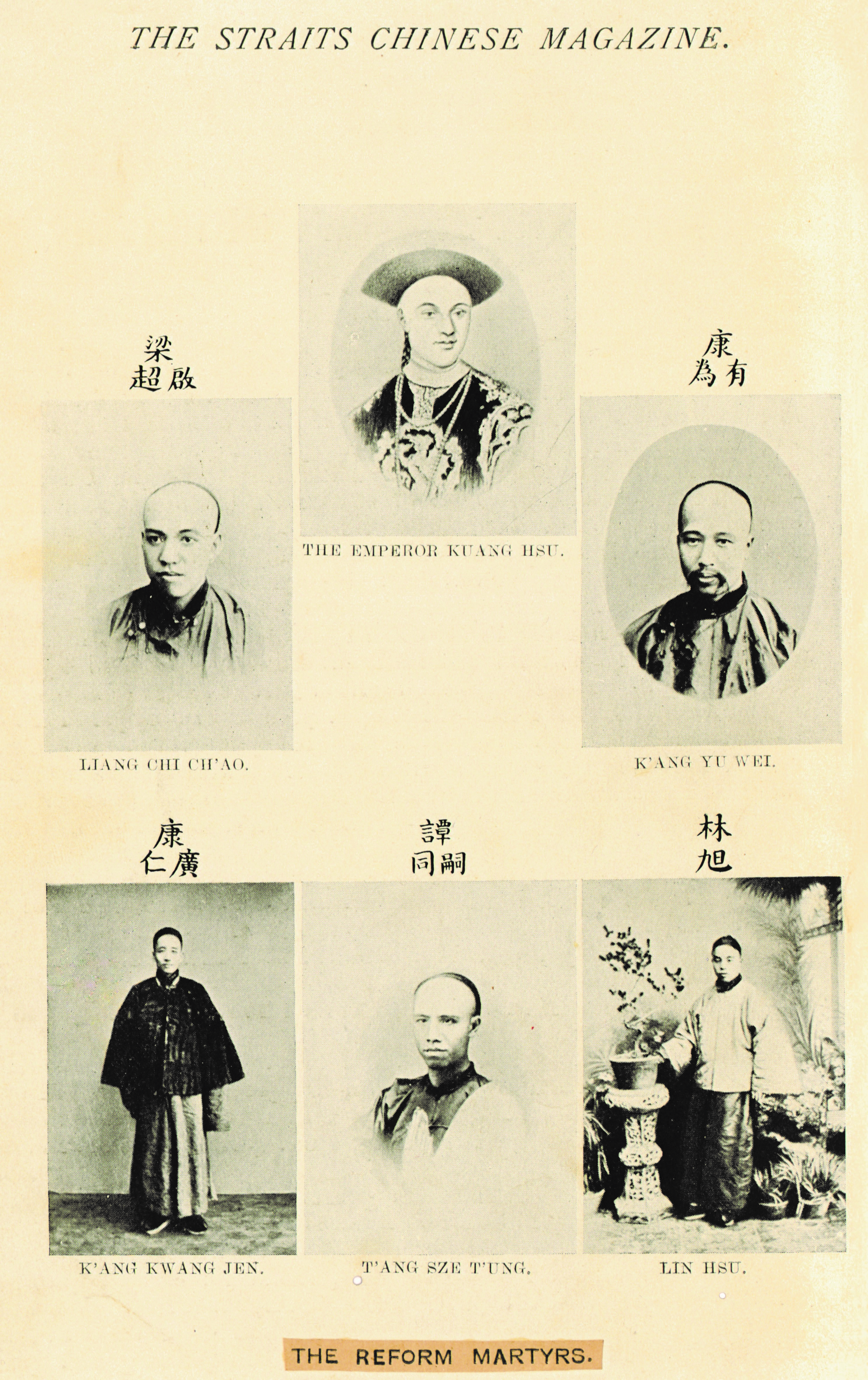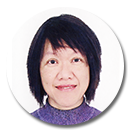The Straits Chinese Magazine: A Malayan Voice
Senior Librarian Bonny Tan traces the history of the influential Straits Chinese Magazine.

Hidden away in that excellent publication, the Straits Chinese Magazine, there is often a good deal of suggestive matter well deserving public attention. (Straits Times, 16 November 1907, p. 6; NL 1975)
Motivations and Impetus
By the late 19th century, there was a small but significant number of Straits Chinese, or Peranakans, who had acquired status, wealth and community standing. The Peranakan community in the Malay Peninsula and Singapore was riding on a wave of economic success and experiencing a renaissance in knowledge and culture.
Though it was through the administration and education systems of the British that they had risen in society, these newly empowered Straits Chinese also sought to have a voice of their own, as the local press was then dominated by white colonialists.
The exigencies of conducting a newspaper for the amusement and information of the European sometimes compel even sensible editors to indulge in practical jokes at the expense of the Asiatic peoples who do not possess a newspaper wherein to retaliate.
— “Editorial – The need for an Asiatic daily,” Straits Chinese Magazine, 9(2), June 1905, p. 41.
It was in this context that these educated anglophile Straits Chinese began The Straits Chinese Magazine: A Quarterly Journal of Oriental and Occidental Culture1 in 1897. The quarterly was the first English serial edited and published by Malayans.2

The magazine lasted 11 years and was “a medium for the discussion of political/social, and other matters affecting the Straits people generally” (Editorial, 1897, SCM, March, 1(1), p. 1). It became a rich collection of literary works and social commentaries including short stories by the Straits Chinese or about them;3 political analysis and insights into Straits Chinese perspectives on Chinese reformation and opinions on the tumultuous events in the motherland (China); and biographical and social commentaries of the people and events in the Straits at a time when the Straits Chinese were politically and financially on the rise. The readers targeted were not just the Straits Chinese but all who were Straits-born as the articles addressed the concerns and interests of Malays, Eurasians, Indians and other races in the Straits.

Cultural Loyalties
Lim Boon Keng, co-founder of The Straits Chinese Magazine, stated that “[t]he main object of this Magazine is to promote intellectual activity amongst the Straits-born people, and to guide the present chaotic state of public opinion among them to some definite end” (Editorial, 1897, SCM, March, 1(1), p. 2). This “chaotic state of public opinion” was the “counter-pull of three different cultural loyalties [which] threatened a ‘crisis of identity’ among the rising younger generation of Singapore Chinese” (Turnbull, p. 103). This elite group of Straits Chinese remained proud of their British heritage and continued to respect their colonial masters, but a rising and tumultuous China, as well as identification with the people of Malaya, goaded them to articulate a new definition of being Chinese in British Malaya.
In the Straits Settlements, the Straits Chinese who had resided there for several generations had adopted local ways and spoke Baba Malay at home and in business. Yet, because of their education in British institutions and employment in British agencies, the Straits Chinese idealised British culture and sought to be part of the culture which surrounded them. Almost two decades previously, in 1879, Vaughan4 noted that there was “nothing they rejoice[d] in more than being British subjects” (Vaughan, 1879, p. 4) or “orang putih” (white man – Caucasian).
The magazine retained much of this anglophile, royalist perspective, with articles on Queen Victoria’s Jubilee in 1897,5 her death in 1901 and the coronation of Albert Edward in 1902. After all, its editors were all Queen’s scholars who had been educated in the hallowed halls of the best British universities. They participated in the Singapore contingent to witness the King’s coronation, and reported extensively on it, revealing interesting snippets of Straits Chinese insights as can be found in this Baba Malay6 rhyme about the coronation:
“Kita pergi London Town,
Tengok Raja pakei crown,
Inggris missi missi suka S. V. A.”
[We left for London Town,
To witness the King’s coronation.
The English ladies appreciate the S.V.A.
(Straits Volunteer Artillery)]7
— From Song, O. S., Life in Alexandra Palace. (1902, December), SCM, 6(24). p. 123.
Vaughan also noted: “The Baba as a rule has no desire to visit China; he does not regard it as his home” (Vaughan, 1879, p. 5). However, the recent8 establishment of the Chinese consulate in Singapore, the relaxation of emigration laws in China and protection over British citizens returning to China,9 were all factors that encouraged the Straits Chinese to rediscover their heritage and rebuild ties with their motherland. With a revived interest in China, many of the articles in the magazine were thus written for readers “who desire to have restored to them the knowledge of their forefathers in English dress” (SCM, 1897, June, 1(2), p. 64).
Although the magazine was styled after similar journals of literary societies in London, its contents were influenced by this growing interest in the Chinese culture. The Chinese consuls were instrumental in restoring Chinese culture and literary interest amongst the Straits Chinese, particularly through newly formed literary societies. Tso Ping-Lung, the first Chinese consul from China in Singapore, established the Celestial Reasoning Association – the first literary society amongst the Straits Chinese – in 1882. At their society meetings, Chinese classics were read and discussed and poetry or essay competitions held on subjects peculiar to the Chinese. These winning essays and poetry were published in local newspapers.10 Literary societies such as this thus supported and maintained representation in much of the Chinese press in Singapore.11 In the same vein, many Straits Chinese societies were soon established, and their speeches and debates reproduced and reported in the Straits Chinese Magazine. These included the Chinese Christian Association, established in 1889; the Chinese Philomathic Society, formed by Lim Boon Keng;12 the Straits Chinese British Association, formed In 1900; and the Selangor Chinese Literary and Debating Society, formed In 1903 and headed by Gnoh Lean Tuck (Wu Lien-Teh) who would also become an editor of the Straits Chinese Magazine.
Chinese Reformation
During the span of the magazine’s life (1897–1907), China was in the throes of change with conflicts within and invasions from without. The defeats suffered by China during the Opium Wars In the mid-19th century and the Sino-Japanese War in 1894 had humiliated China and revealed the weaknesses of the declining Qing Dynasty. The disaffected populace threatened the ancient royal throne with outbreaks of riots and rebellion. During this time, the young emperor, Guangxu, sought to retain his throne whilst implementing institutional reforms. With his advisors, Kang Youwel and Liang Qichao, Guangxu began a reform movement known as the Hundred Days’ Reform in 1898 which lasted 103 days before it was quashed by his adopted mother, the Empress Dowager Cixi.

Kang, the driving intellectual force behind the reform movement, influenced not only his countrymen at home but also those overseas.13 His radical interpretation of Confucianism in the light of Western concepts14 was soon adopted by those in Singapore.15 Kang initiated the Confucian Revival Movement in Singapore, in partnership with the Chinese Consul-General in Singapore and with Lim Boon Keng’s articulate and widely published support.16
In the Straits Chinese Magazine, Lim propagated Kang’s philosophy17 through various articles18 on Confucianism including an extensive translation of Tso Chuan’s (Zuo Zhuan) Confucian classic. The translations were presented with Chinese text printed interlineally alongside the English translations, as well as the full text laid out in both Chinese and English. However, the process was not easy: “The typographical dlfflculties were immense and were skilfully and rapidly overcome by the late Mr Arozoo” ((1901, December), SCM, 5(20), p. 168).
A key aspect of the Confucian movement was the establishment of Chinese schools to promote loyalty to the motherland. Thus, education became a key focus of the magazine, especially as the editors were also instrumental in founding several new Chinese schools, notably the Singapore Chinese Girls’ School.19 Articles addressed not only the need to educate Straits Chinese boys (known as Babas) but more importantly the Nyonyas, womenfolk of the Straits Chinese. In fact, although most articles were penned primarily by men, the eighth edition of 1904’s magazine featured the writings of various Chinese women. Wong Ting Nguk wrote on “Fragments of Chinese folk-lore” ((1904, March), SCM, 8(1), pp. 92–94) while “A Chinese Lady” wrote on the influence of women in Chinese history ((1904, March), SCM, 8(1), pp. 126–128) and Lin Meng Chin gave “Select anecdotes from the records of famous women” ((1904, March), SCM, 8, pp. 38, 94, 142, 188) over several issues of the Magazine.
Lim also started a six-part series of articles which encouraged social reform amongst the Chinese of Malaya in a wide range of fields like marriage, education and dress.20 The most controversial article was the one that advocated doing away with the “towchang”, or the Chinese pigtail,21 in which Lim’s arguments led to strong divisions within the local Chinese community. These strong divisions would present themselves again when reformists and revolutionaries swept the motherland in 1911.
Managing the Magazine
800 copies of the first issue of the magazine, published by the Koh Yew Hean press in April 1897, were completely sold out. Subscriptions were at $1.50 per annum and by the turn of the 20th century, the Magazine had a wide circulation both in Malaya (Singapore, Melaka, Penang, Kuala Lumpur, Seremban, Taiping, Labuan and Sarawak) as well as in “distant comers of the globe”22 (London, Edinburgh, Saigon, Yokohama, Bangkok and Batavia).23 Later editions of the magazine had regular columns in the form of letters from London, Java, Melaka and Penang. They were written by a representative of the Straits Chinese community in these cities and provided updates on persons, events and thoughts on their local community. By its seventh year, the Magazine was read in “quiet homes In England and America”,24 and was in the collections of the Library of Congress and the Ecole Francais de I’Extreme Orient.

The magazine’s editors were Lim Boon Keng,25 Song Ong Siang and Gnoh Lean Tuck (Wu Lien-Teh) – men who were part of the fraternity of Straits Chinese Queen’s scholars and who had gained recognition in their professions as lawyer and doctors.26 However, the men were bonded by more than just education and profession. Gnoh and Lim were brothers-in-law27 and both were swept up in China’s call for support. They spent their twilight years there, with Gnoh gaining fame as Medical Adviser in Beijing, an appointment under which he fought the plague, while Lim served as President of Xiamen University, which was established by a fellow Singaporean Chinese, Tan Kah Kee.
New editions of the magazine were regularly highlighted in The Straits Times as well as The Singapore Free Press and Mercantile Advertiser, though the relationship with the former was often mutually critical. For example, in an article dated 7 April 1903 in the Straits Times, the columnist notes:
Some of these tensions arose because these local Straits Chinese writers articulately commented on the vices they observed of their British colonial masters. A counter-reply to a review of the magazine in the Penang Gazette shows up some of this:
These strongly worded commentaries were reserved not only for the Europeans, but were often critical of their own compatriots as well. In addressing the need to educate the Nyonyas, “A Baba” states:
In the seventh year of its publication, the editors stated:
Unfortunately, “[t]hrough lack of support and interest from the community it had been intended to benefit, [it] came to an untimely end in 1907” (Song, 1923, p. 235).
The Straits Chinese Magazine is from the collection of rare and historical imprints at the National Library Singapore. Bound copies of all the editions of the Straits Chinese Magazine can be found in the Heritage Collection and on microfilm at the National Library in Singapore. Each volume of the Straits Chinese Magazine is prefaced by a useful table of contents with a subject index, listing all the articles published that year according to topics such as Business, Current Events, Biography, Literature and even Science.
The author would like to acknowledge Assistant Professor Chua Ai Lin of the Department of History, National University of Singapore for reviewing this article.

Senior Librarian
Lee Kong Chian Reference Library
National Library
REFERENCES
Ang, S.L. (2007, January). Of towchangs and the ‘Republic Beard’: Dr Lim Boon Keng’s life and achievements. BiblioAsia, 2 (4), 4–9. Retrieved from BiblioAsia website.
Ang, S.L., & Tan, B. (2007). Lim Boon Keng: A life to remember: A select annotated bibliography (1869–1957). Singapore: National Library Board. (Call no.: RSING 016.36192 LIM)
Chen, M.H. (1967). The early Chinese newspapers of Singapore 1881–1912. Singapore: University of Malaya Press. (Call no.: RSING 079.5702 CHE)
Frost, M.R. (2005, February). Emporium in imperio: Nanyang networks and the Straits Chinese in Singapore, 1819–1914. Journal of Southeast Asian Studies, 36 (1), 29–66. Retrieved from JSTOR via NLB’s eResources website.
Frost, M.R. (2003, August). Transcultural diaspora: The Straits Chinese in Singapore, 1819–1918. Working paper series, 10. Retrieved from http://www.ari.nus.edu.sg/publication_details.asp?pubtypeid=WP&pubid=169.
Holden, P. (2009). Colonial fiction, hybrid lives: Early Singaporean fiction in The Straits Chinese Magazine (pp. 85–97). In A. Poon, P. Holden & S.G.L. Lim, Writing Singapore: An historical anthology of Singapore literature. Singapore: NUS Press: National Arts Council Singapore. (Call no.: RSING S820.8 WRI)
Khor, E.H. (1958). The public life of Dr. Lim Boon Keng. Singapore: University of Malaya. (Call no.: RCLOS 361.924 LIM.K)
Khor, J.K.N. (2007). Creating a modern identity: A study of the fictional works in the Straits Chinese Magazine. In E. Thumboo & R.I. Sayson (Eds.), From the inside: Asia Pacific literature in Englishes (Vol. 1) (pp. 282–290). Singapore: Ethos Books. (Call no.: RSING 427.95 WRI)
Kwee, H.K. (2000). Enunciating “Chineseness” in late-nineteenth and early-twentieth century Singapore [Unpublished Honours Thesis]. National University of Singapore, Singapore.
Lee, K.C. (2005). Pioneers of modern China: Understanding the inscrutable Chinese. Singapore: World Scientific. (Call no.: RSING 951.050922 LEE)
Lee, G.K. (2006). Introduction – A Chinese journey: Lim Boon Keng & his thoughts. In W. Ching (B.K. Lim), The Chinese crisis from within (p. v). Singapore: Select Publications. (Call no.: RSING 951.04 LIM)
Lim, F.N. (1995). Aspects of Straits Chinese identity in the early twentieth century [Unpublished honours thesis]. National University of Singapore, Singapore.
Rudolph, J. (1999, January 3). The Babas. The Straits Times, p. 28. Retrieved from NewspaperSG.
NOTES
-
Henceforth identified as the Magazine or SCM. ↩
-
Rudolph, Jurgen. (1999, January 3). The Babas. The Straits Times, p. 28. ↩
-
Literary works published in the SCM have been analysed by Phlip Holden (2009) and Neil Khor (2007). ↩
-
J.D. Vaughan was Assistant Resident of Singapore and superintendent of the Penang Police Force. ↩
-
The Magazine was in fact published coincidentally in the year of the Queen’s jubilee. ↩
-
This is one of the few examples of Baba Malay being published in the Magazine. On the whole, articles were written in English with a limited number of Chinese works translated into English. It is noteworthy that during this same period many of the classical Chinese narratives were being translated into Baba Malay and these had garnered a wide readership amongst the Straits Chinese. The Magazine is thus believed to have targeted a more exclusive audience amongst the Straits Chinese. ↩
-
As opposed to the SVI (Straits Volunteer Infantry) and the SVR (Straits Volunteer Rifles). ↩
-
The Consulate was established in 1877. ↩
-
Turnbull, 1992, p. 103. ↩
-
Speeches from other societies which Lim was a member of, like the Straits Philosophical Society, was also reproduced in the Magazine. There were 17 essays from the Straits Philosophical Society. ↩
-
In many ways, the Magazine’s expansive global and cultural coverage reflects the growing influence of the Chinese reformers amongst the overseas Chinese, from Southeast Asia to Europe and North America. Shih-shan notes that at the turn of the 20th century, the Chinese in Southeast Asia and North America faced discrimination from the ruling white society. Since the Chinese “attributed their maltreatment to the Manchu government’s inability to protect her people, both at home and abroad, the logical remedy was to help make China a strong and independent nation”. (Shih-shan, pp. 8–9). This perspective invoked the strong support from overseas Chinese for the reformists. ↩
-
Interest in Kang’s views on Confucianism was evident in Singapore as early as 1894, a few years prior to his visit to Singapore. Lee, 2005, p. 4. ↩
-
Lim published his thoughts on Confucianism in the Magazine and various other serials. ↩
-
Frost argues that Lim’s push for Confucianism was “not an attempt to re-Sinify” the Straits Chinese but rather to “radically reconstruct Chinese religion and identity” so that a wider group – those who were Western educated and/or converted to Christianity – could participate in revival (Frost, 2005, p. 57). ↩
-
For example, the 1904 volume has a series by Lim entitled “The basis of Confucian ethics”, “Confucian cosmogony and theism” and “Confucian view of human nature”. ↩
-
In fact the constitution of the Singapore Chinese Girls’ School was written by Kang Youwei (Wang, 1953, p. 83). ↩
-
Kwee (2000), however, notes that much of the reforms recommended could only be implemented by the wealthy Chinese who could afford to break with tradition (pp. 91–92) ↩
-
The traditional Chinese pigtail had been imposed by the Qing rulers as a symbol of loyalty to the Qing throne. Cutting it was considered treason and was punishable by death. ↩
-
News and notes – ourselves. (1903, December). The Straits Chinese magazine: A quarterly journal of oriental and occidental culture, 7 (4), 160. ↩
-
Based on the subscription notice for volume 8, 1904. By volume 11, 1907, Hong Kong had been added. ↩
-
Editorial. (1904, March). The Straits Chinese magazine: A quarterly journal of oriental and occidental culture, 8 (1), 1. ↩
-
Lim was only 28 when he cofounded the Magazine. ↩
-
Wu, L. (1904, March). The Straits Settlements Queen’s Scholarships. The Straits Chinese magazine: A quarterly journal of oriental and occidental culture, 8 (1), p. 1. ↩
-
S.C. Yin who later was recruited into the editorial team was also Lim’s brother-in-law by Lim’s second marriage. ↩

